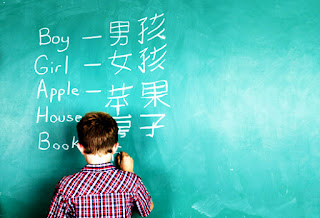There are many differences between a monolingual and multilingual child. In fact, a child that speaks two or more languages can easily monitor the ambiance and environment around him or her. In fact, this is similar to driving a motor vehicle. When a driver drives a vehicle, he or she has to perform many mental calculations to gauge the road, traffic coming from the opposite side, traffic that is behind the car, gauge distractions that occur on the roadside and to prevent any untoward incidences happening by monitoring the driving speed and by controlling speed, gear changing and clutch management. A bilingual child would be able to perform a series of mental tasks those are simultaneous and quick. In fact, these children always use lesser areas or sectors of brain to perform any mental tasks. Curiously, bilingual ability of the brain may postpone the onset of age related conditions like Alzheimer's symptom.
Different advantages and benefits of being a bilingual
- Segregating words into different categories based on their meanings.
- Use information in many different ways and meanings.
- Easily playing word and scrabble games very easily.
- Easily solving crossword puzzles when children grow older and step into higher grade schools.
- Finding problems any problems very quickly.
- Think laterally and perform simultaneous mental problems.
- Easily develop personal relationship with others and connect with them without any problems.
Bilingual children always follow a particular pattern of learning which is systematic and organized. In fact, the rate at which a bilingual brain works is far superior to a child that just speaks one language. However, the biggest and most significant advantage of learning two languages is the ability of children to live anywhere in the world and confidence to lead a contended life.

View at www.learningtech.com.sg






















